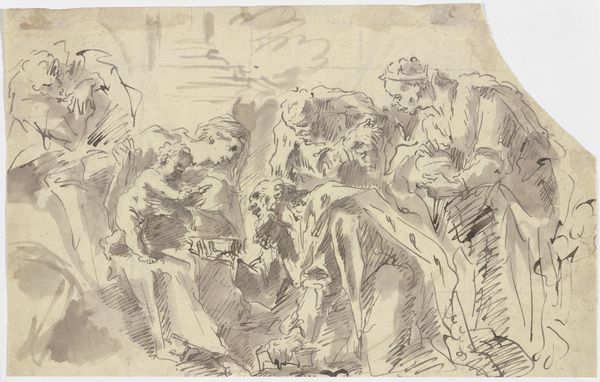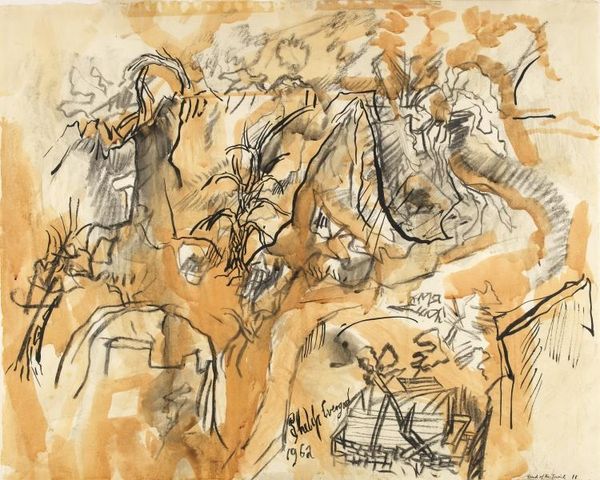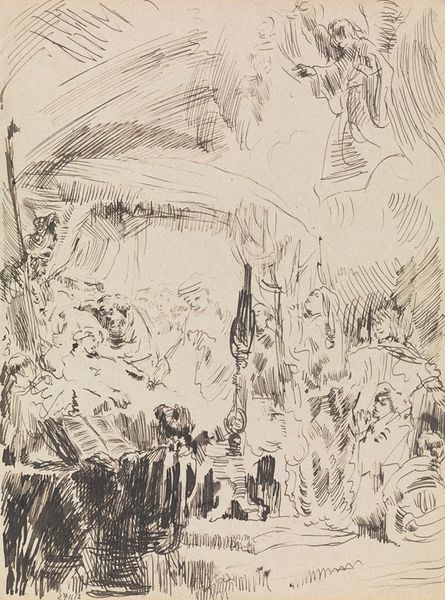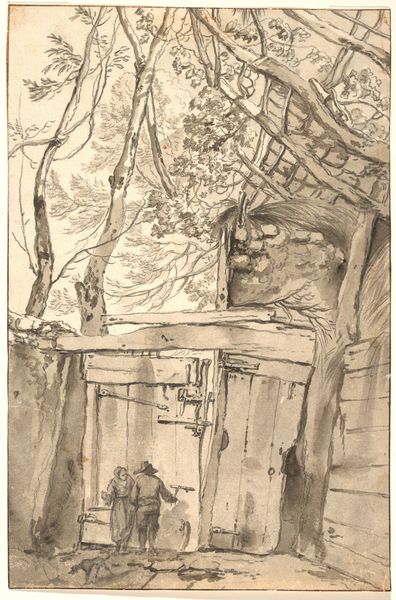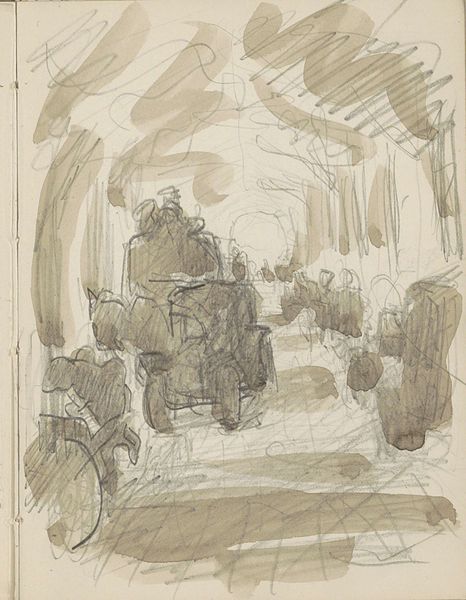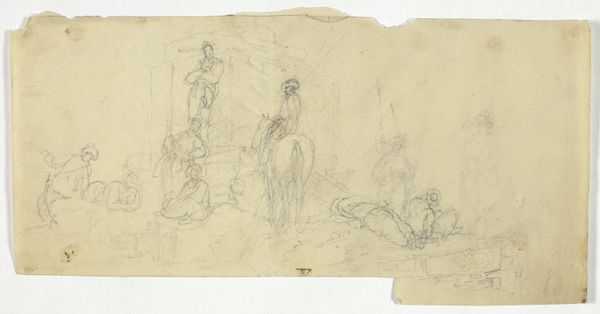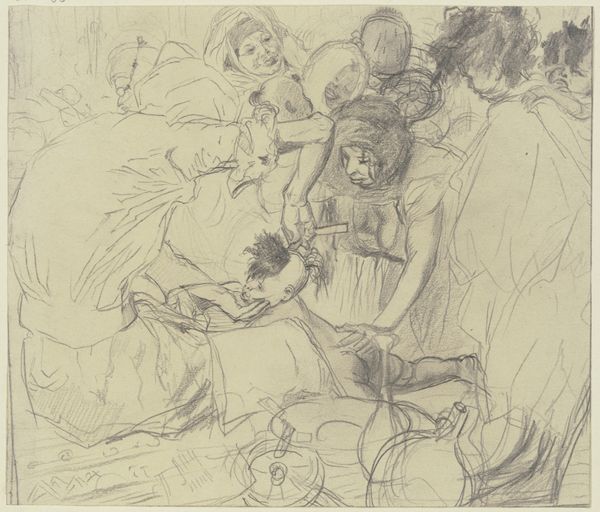
drawing, ink, pen
#
drawing
#
ink drawing
#
pen sketch
#
ink
#
pen
#
cityscape
#
genre-painting
#
realism
Dimensions: sheet: 35.4 × 50.64 cm (13 15/16 × 19 15/16 in.)
Copyright: National Gallery of Art: CC0 1.0
Curator: Reginald Marsh’s 1926 drawing, "Construction Workers," rendered in pen and ink, offers us a glimpse into a bustling cityscape under development. Editor: There's a real sense of movement and depth despite the monochrome palette. The lines are so kinetic, it almost feels like the drawing is unfinished, which somehow adds to its immediacy. Curator: Marsh was deeply engaged with documenting the daily lives of working-class people. Think about the social context; the Roaring Twenties, urbanization rapidly transforming American cities, and the sheer physicality of labor involved in that transformation. This work speaks volumes about the lives impacted by it. Editor: The formal elements, the interplay of light and shadow achieved through these varying ink washes, directs our gaze. See how the crane looming at the top pulls you into the scene. Then, Marsh scatters little pockets of activity that keeps our eyes engaged and roving throughout the whole composition. Curator: The repetitive nature of construction work becomes clear here; a group process, with all these bodies crammed into one space and collaborating to get the job done, not romanticized but realistically captured by Marsh. How was urban planning and design enabled and by whom? That’s what this work conveys. Editor: Precisely. Look closely and see how Marsh contrasts that sort of brutal collective exertion with the isolated individuals. It's a clever play of positive and negative space. Notice, too, the subtle detail of their clothing-- the headgear, sturdy outerwear, these shapes provide a structure throughout. Curator: It highlights the anonymity that comes with being part of a workforce, that the labor put forth is essentially the contribution of unnamed bodies. The act of creating art itself mirrors the act of labor represented. What was Marsh's labor? And how did it portray the labor of others? Editor: Thinking about that artistic labor helps. Marsh uses this loose application of the ink in order to set off these shapes--he shows the beauty in what could otherwise be a chaotic or mundane scene. It offers the viewers a lens to view the built landscape, as we reflect on labor involved. Curator: I think ultimately Marsh gives us a powerful snapshot of American urban life. We are left to question not just the aesthetics but the broader societal systems that influence our environments and existence. Editor: A compelling and energetic snapshot indeed.
Comments
No comments
Be the first to comment and join the conversation on the ultimate creative platform.

